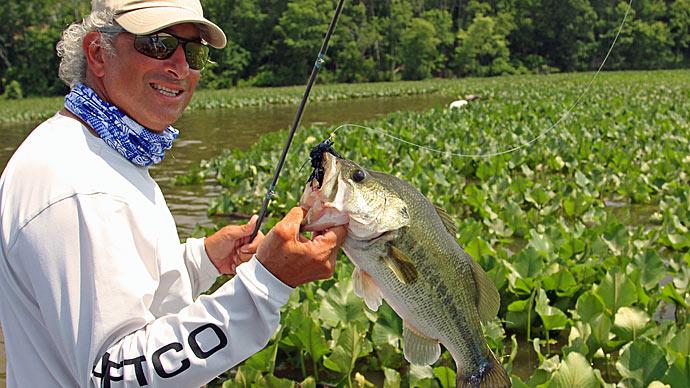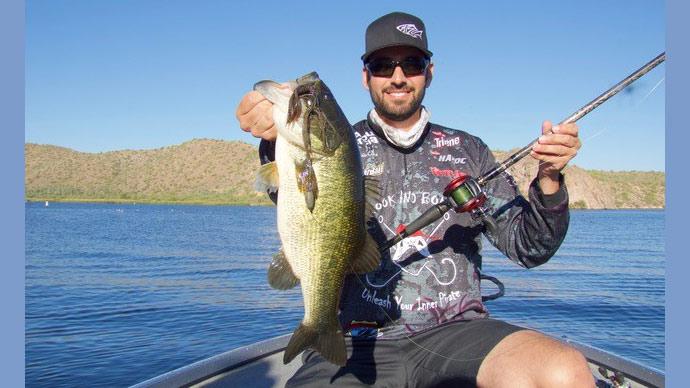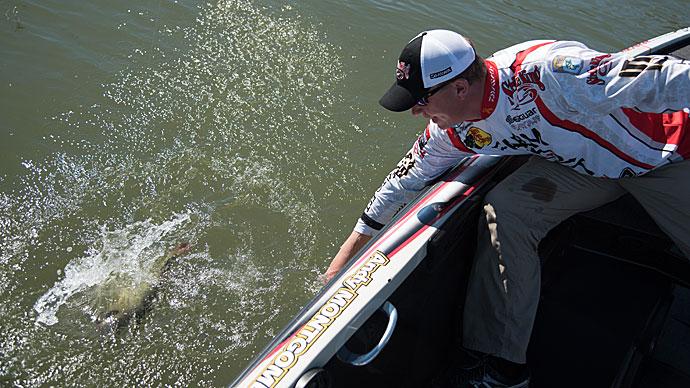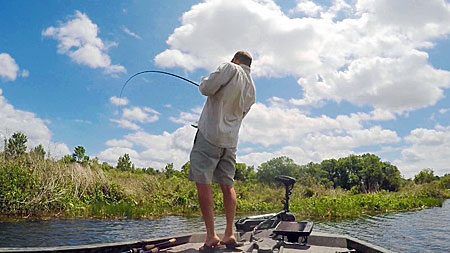
Punching, flipping, and pitching have been around for a long time and are well-known techniques for bass, but developments in weights, lines, and rods in the past few years have refined the technique and made it an even more deadly method for trophy bass.
Many will claim that punching weeds was developed on the deltas and estuaries of California, but Florida is the undisputed capital of punching for bass.
“I’ve done more punching in the last two years than in my entire life!” joked bass fanatic Joe Balog. “A move to Florida in 2015 precipitated that. Florida is without question the capital of punching. Part of the reason for that is grass grows year-round down here, and you have a lot of matted, thick vegetation where you can flip and pitch every day and never cover it all.”
Balog said there’s grass everywhere you fish in Florida, but it falls into three categories you need to note. “The first category is matted vegetation, thick carpets of hydrilla or Florida elodea attached to the bottom. The second type is floating vegetation like hyacinth, pennywort, and water lettuce. The third type of cover is what I call mud mats. A lot of people in the south call them tussocks or hummocks. These floating islands have broken away from the mainland and are free-floating sanctuaries for giant bass. They’re usually only the size of a truck, but they’ll have grass, cattails, and even trees, and they are a magnet for big bass.”
Targeting these seemingly impenetrable bass havens has gotten easier with the advent of tungsten weights, braided lines, and new longer rods designed explicitly for punching. These dense jungles attract and hold bass because many anglers avoid them because of the difficulty of fishing them, but that is changing. Bass retreat to these sanctuaries when there’s excessive fishing pressure because no one bothers them there, and there’s plenty of food to be had.
The advantages of punching are twofold. Punching allows you to put baits where bass aren’t used to seeing lures and fast-sinking baits stimulate reflex bites. Bass that are hiding under these dense mats of cover are not stalking; they’re not defending themselves. Punching triggers a reaction from a bass. When the lure plunges through the cover, a bass immediately inhales it to see what it is. Realizing that it’s hard and not something to eat, the bass instinctively spits it. Typically the angler has but a second or two to set the hook.
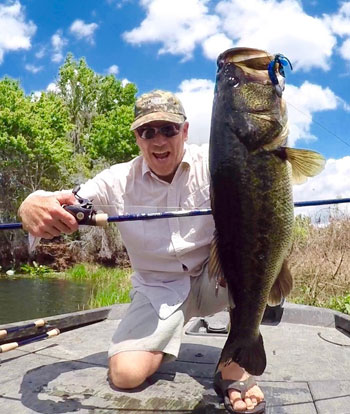
Punching requires a heavy 1- to 2-ounce tungsten punching weight rigged Texas-style, a strong, sturdy hook, and compact bait that can penetrate the thick cover. “You need enough weight to get through the cover, but not too heavy that you can’t maneuver and manipulate the bait,” offered Balog. “You’re not going to penetrate the cover every time you cast. It’s just the nature of the beast, but you need to use enough weight that 70% of your cast will bust through the cover, or you’re spinning your wheels.” Balog said he uses a 1-ounce weight almost exclusively when fishing hydrilla and similar cover. He stressed the need to match the weight to the vegetation. Balog said he finds himself using a 1-ounce weight probably 70% of the time, a 1-1/2-ounce weight 25% of the time, and a heavy 2-ounce weight 5% of the time when punching. “It’s important that you match your weight to the vegetation.”
Even the way of rigging your weight for punching has changed in recent years. When using monofilament, you would use a toothpick for pegging a weight, but toothpicks won’t work with braided line. “We’re using a bullet-shaped tungsten weight and pegging it with a bobber stop and rubber toothpick. Sometimes you have to use two rubber toothpicks depending on the weight size. If your local tackle store doesn’t have rubber toothpicks, you can find them at tacklewharehouse.com,” said Balog.
Today’s new wave of non-stretch braided lines is a godsend to anglers who like to punch. Braid is strong, thin, and ideal for punching. “I use Suffix 832 braid in either 50- or 65-pound 100% of the time when I’m punching,” said Balog. “When using braid and a heavy power 7-1/2 to a 9-foot rod, you need a stout, strong heavy-duty hook, like a straight shank VMC flippin’ hook. When using this tackle, it’s pretty easy to bend or flex a lesser hook.”
Baits for punching need to be compact to penetrate the heavy cover. “Most of the time, I find myself using a crayfish or beaver-style bait when punching,” shared Balog. “Bass like certain profiles depending on the body of water. It might not be important on a particular body, but it makes all the difference in the world on another. It pays to experiment with the profile action. It might be a subtle change between flappy and subtle, meaning getting four bites versus none. I generally find a 4-inch bait to be pretty standard when I’m punching.”
“There was a time when guys would use long cane poles to punch when fishing heavy vegetation,” said Balog. “Of course, no one does that now. Now, an 7-foot 11-inch rod is normal and accepted for punching. I’ve been field-testing a new 7-foot, 11-inch St Croix Rod that is incredible. It has just the right taper and bend for punching. It’s strong yet gives you the leverage and control you need. I can see how it’s helping me catch more fish.”
“The length helps me cover more water, lift the bait and reach more spots that I couldn’t target with a shorter rod. When punching, you want to pull instead of planting your feet and setting the hook, and you want to set the hook the instant you feel the bite before the bass drops it. You can do that and more with this rod.” Balog used the new rod to recently catch his personal best Florida largemouth, an 11-1/2-pound giant.
BassResource may receive a portion of revenues if you make a purchase using a link above.


